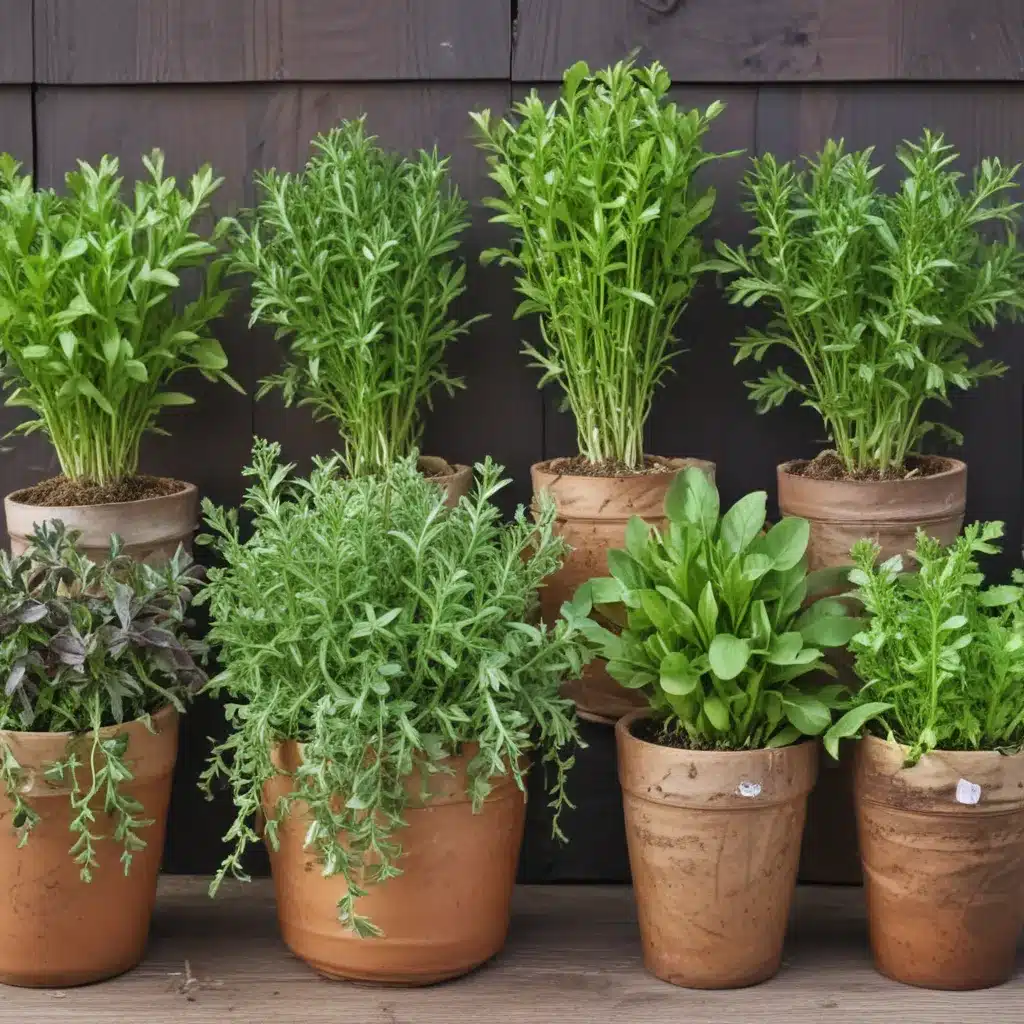
The Joy of Growing Herbs
As a passionate gardener and home cook, I’ve long found growing my own culinary herbs to be one of the most rewarding parts of maintaining a lush, flavorful garden. There’s just something so satisfying about plucking a sprig of fragrant rosemary or snipping a few leaves of vibrant basil to add that perfect finishing touch to a dish. And let’s not forget the money-saving benefits of having a thriving herb garden right outside your kitchen door!
Luckily for me, the area around my home in Aberdeen is perfectly suited for cultivating a wide variety of herbs. With its fertile soil and ample sunshine, I’ve been able to establish a bountiful little herb patch that supplies me with fresh, flavor-packed ingredients all season long. Of course, not every herb is equally easy to grow in our sometimes-finicky Scottish climate, but with a little care and attention, it’s absolutely possible to create your own custom culinary herb garden – no matter the size of your outdoor space.
Perennial Favorites
When it comes to building the foundation of a productive herb garden, I always recommend starting with a few reliable perennial varieties. These are the workhorses that will return year after year, requiring minimal effort on your part. One of my longtime favorites is chives – I have three robust clumps growing right near my kitchen door, providing me with a steady supply of those delicate, onion-y fronds for soups, salads, and more.
Sage is another perennial stunner that deserves a spot in every herb garden. I have a single large plant that I can harvest from all season, even when its foliage starts to curl up in the colder months. And while my rosemary doesn’t survive our winters outdoors, I’ve found success overwintering it indoors in a sunny room, then replanting it in the garden come springtime. This method has allowed me to enjoy the piney, resinous flavor of rosemary throughout the year.
Versatile Mints
If you really want to get the most bang for your buck in the herb garden, look no further than the mint family. These vigorous, aromatic plants are about as easy to grow as it gets, and they offer an incredible range of flavors to explore. In my own garden, I’ve got a delightful arrangement going on between a black-stemmed mint and my lemon balm (Melissa officinalis). They happily share a designated space, providing me with an abundance of refreshing, fragrant foliage for summer drinks and other culinary uses.
Of course, if you want to get really creative, you can pot up different mint varieties – like orange mint, peppermint, and spearmint – to create a colorful, customized collection. Just be sure to keep them contained, as mint has a tendency to spread aggressively if left unchecked. A little regular trimming goes a long way in maintaining orderly herb beds.
Annual All-Stars
While perennials form the backbone of my herb garden, I always make sure to devote some space to reliable annual varieties as well. Chief among them is parsley – both the flat-leaf and curly-leaf types. I typically start my parsley from nursery seedlings, as the seeds can take an eternity to germinate. But the payoff is well worth it, as I get to enjoy a steady supply of this versatile green throughout the growing season.
Another annual herb that I absolutely adore is basil. From classic Genovese to lemon and Thai varieties, there’s a basil for every culinary need. I love being able to just step outside and snip a few leaves as needed for pesto, salads, or any number of summertime dishes. And the best part? Basil freezes beautifully, so I can enjoy its flavor all year round by making little bundles and stashing them in the freezer.
Finicky Favorites
Of course, not every herb is as easy to grow as the ones I’ve mentioned so far. Take cilantro and coriander, for example – they can be a bit tricky to get right. I’ve found that the key is to do successive plantings throughout the season, as cilantro has a tendency to bolt and lose its leaves after a relatively short time. But I always make sure to save some of the coriander seeds for later use.
Tarragon is another herb that can be a bit finicky. I’ve had the best luck simply buying a small plant and letting it grow for the summer, rather than trying to start it from seed. And while chervil, also known as “French parsley,” is a delicate and delicious addition to any herb garden, it’s not the most reliable performer in our climate. Still, I enjoy the challenge of coaxing these more temperamental herbs to thrive – it just makes their flavors that much more special when I’m able to incorporate them into my cooking.
A Culinary Oasis
At the end of the day, maintaining a thriving herb garden is about so much more than just saving money on grocery bills (though that’s certainly a nice perk!). It’s about cultivating your own little culinary oasis, where you can wander out the back door and handpick the perfect ingredients to make your meals sing. And for a home cook like me, there’s just nothing that quite compares to that.
So if you’re lucky enough to have even a small patch of sunny outdoor space, I highly encourage you to start building your own custom herb garden. ABC Home & Garden offers a wealth of resources to help you get started, from planting tips to design inspiration. With a little care and attention, you too can enjoy the endless joys of homegrown herbs – and elevate your cooking to delicious new heights in the process.
















